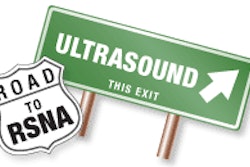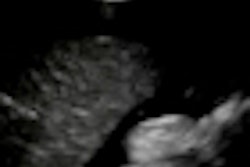Ultrasound is often used as a first-line imaging method in investigating acute appendicitis. Sometimes, however, the appendix can't be visualized on ultrasound, a dilemma that causes confusion among emergency physicians and surgeons, and often results in an immediate order for a CT scan, said presenter Dr. Gary Brahm.
To try to give ordering physicians the confidence to exclude appendicitis as the cause of the patient's symptoms without ordering a CT scan and without negatively affecting patient care, the researchers performed a retrospective review of patients presenting to their emergency department with symptoms of acute appendicitis.
They found that in cases in which the appendix is not visualized on ultrasound and there are no secondary features of acute appendicitis, the chances of the patient having acute appendicitis are very low (a negative predictive value of 95%).
"In the majority of cases in which the appendix is not visualized on ultrasound, the patient does not need to go on to have a CT examination," Brahm said. "This will reduce the number of CT examinations performed, reducing the population's radiation dose related to CT, without compromising patient care."



















